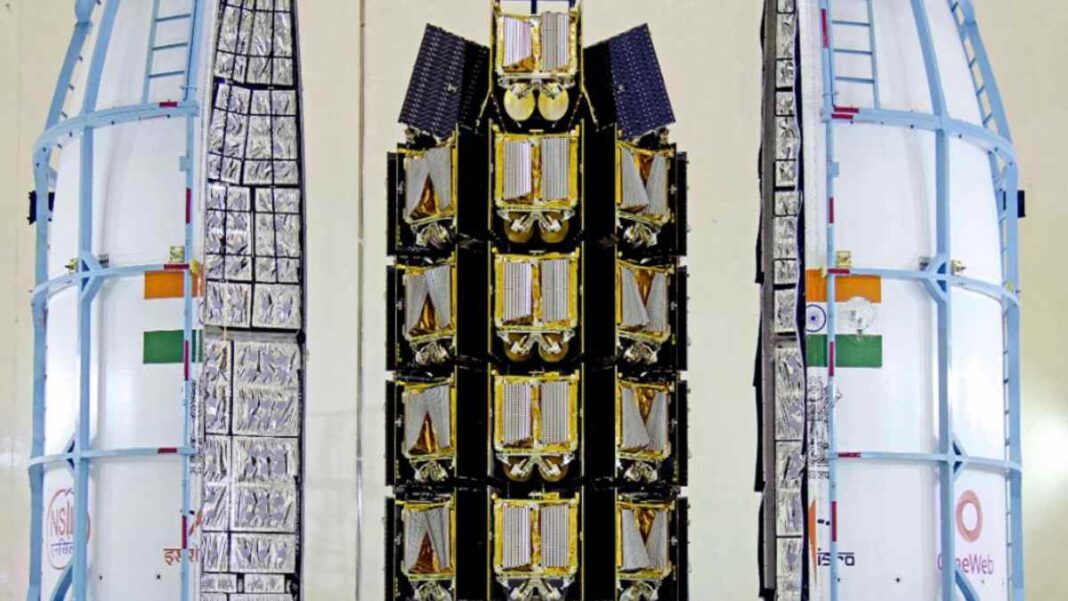INDIA: The Indian Space Research Organization (ISRO) has announced that it has moved its Launch Vehicle Mark-III (LVM-III) carrying 36 OneWeb satellites to the launch pad, with the mission scheduled to lift off on March 26.
The LVM-III is India’s heaviest launch vehicle and will transport the broadband satellites to low-Earth orbit (LEO).
This will mark the second time that OneWeb satellites will be launched from India in the last year as the company aims to complete its maiden network of the broadband constellation with the 18th launch from India. The mission will take place at the Satish Dhawan Space Center in Sriharikota.
OneWeb has carried out the 17th launch to place 40 broadband satellites atop a Falcon 9 rocket from SpaceX.
The upcoming mission is expected to launch at 9 a.m. on Sunday from Sriharikota, and OneWeb tweeted, “This mission marks OneWeb’s second satellite deployment from India, highlighting the collaboration between the UK and Indian space industries.”
The LVM-III is India’s heaviest launch vehicle, previously known as the Geosynchronous Launch Vehicle Mark-III (GSLV-MkIII), and has been renamed because it will not deploy the satellites in the geosynchronous orbit. Instead, the OneWeb satellites will operate in low-Earth orbit (LEO) at an altitude of 1,200 kilometers.
The LVM-III is a three-stage launch vehicle consisting of two solid propellant S200 strap-ons, a core stage comprising the L110 liquid stage, the C25 cryogenic stage, the equipment bay (EB), and the encapsulated assembly (EA). The spacecraft, the payload adaptor (PLA), and the payload fairing are all parts of the encapsulated assembly.
The LVM-III has a lift-off mass of 640 tons, and the 43.5-meter-tall three-stage launch vehicle provides India with full self-reliance in launching heavier communication satellites that weigh up to 4000 kg into geosynchronous transfer orbit (GTO).
OneWeb had previously planned to launch 36 broadband satellites aboard Russia’s Soyuz rocket in March 2020.
However, the mission was canceled following Russia’s invasion of Ukraine. Since then, OneWeb has looked to India and collaborated with ISRO and Elon Musk’s SpaceX to complete its network of broadband constellations.
Also Read: Book Your Tickets to Space: ISRO to Launch Space Tourism by 2030



